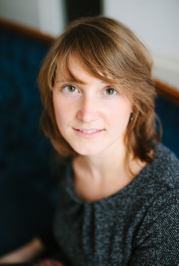Microfluidic platform for bilayer experimentation
From a research tool towards drug screening
Promotion date: October 10.
Promotor: Prof. dr. ir Albert van den Berg
Assistant Promotor: Dr. Séverine Le Gac
| Ion channels, which are located in the membranes of cells, are responsible for a number of physiological processes. Mutations in genes encoding ion channels, resulting in alteration of their function, can be associated with diseases, which makes them attractive targets for drug screening. In this thesis, a microfluidic device for bilayer experimentation has been developed, and its possible utilization for drug screening on ion channels is discussed. First, various technical aspects have been considered such as the design and fabrication of the microfluidic platform. A reliable protocol for bilayer formation has been established, and the coupling of the platform to various detection techniques, including high resolution confocal imaging and electrophysiological measurements, has been achieved. The potential of the platform has been demonstrated through electrophysiological measurements of ion channel models (α-hemolysin and gramicidin) down to the single molecule level, and by proof-of-principle experiments to sense changes in the pore formation of the peptide gramicidin after its exposure to external soluble factors (ethanol & acetylsalicylic acid). The combination of optical and high resolution confocal imaging with electrophysiological measurements, has particularly been applied to study the impact of cholesterol on the bilayer properties (thickness and fluidity) and their effect on the ion channel function. Finally, the multiplexing of the device has been demonstrated. While most of these developments have been driven by the motivation to develop a drug-screening platform, a technology assessment exercise has been conducted to identify alternative applications and to foresee possible hurdles that could be encountered during technology transfer and product development. . |
How is your thesis work to be positioned on a scale from fundamental to application driven research?
The platform I was working on is about 1x2 centimeters in size and consists of two glass layers and one Teflon layer containing one pore of 100 µm in diameter. The ultimate aim is to create a model of the cell membrane across this pore, as this forms a first barrier in the cell and includes various types of proteins. It is known that ion channels play a vital role in developing various disorders and illnesses like cystic fibrosis, arrhythmia and epilepsy.
The goal of this microfluidic platform was to develop and design a high throughput tool for testing and development of drugs on ion channels. My work addresses several crucial aspects: chip technology development, semi-automatic self-assembly methods to create the membranes, and combining optical measurement techniques with electrophysiological measurements. Especially the last element is a special and novel feature which could contribute to useful applications in future. This aspect of my PhD work brought about some nice media attention and led to well regarded scientific publications.
Within the Lab-on-a-Chip Group two master students are taking this research further, and in a post-doc project the multiplexed device is studied further. Also two Euregional companies, Micronit and Ionovation (from Osnabrück), are involved in a collaborating project for further research on the multiplexed platform.
As my PhD project was subsidized by the NanoNext NL program, risk analysis and technology assessment studies formed an integral part of my work. I contributed actively by organizing a workshop on future application of my platform. This event was organized in Enschede. Medical and start-up companies as well as research and financing institutions like RIVM and Rathenau participated, surveying market chances, analyzing risks and, from there, building a map with possible research and innovation pathways for the future.
What are your future plans?
In my future job I would like to continue to be involved in scientific research and stay in tune with scientific and technological progress, however without working as a researcher in the lab. The function of policy officer appeals to me, for example at STW, a Dutch institution subsidizing promising technological developments, or to further continue in the field of technology assessment. The interdisciplinary nature of my PhD work at Mesa+ could be of advantage when applying, I believe, as I encountered several features of scientific research and complex market strategies resulting from there.
What, in your opinion, is important for Mesa+ to stay successful in future?
The entrepreneurial atmosphere is to be cherished and preserved. Mesa+, the University of Twente and start-up companies are collaborating in a fruitful manner in a way society may gain profit from scientific research.
Also the annual Mesa+ Day and monthly colloquia I valued greatly. These I experienced as inspiring; meeting colleagues from abroad as well as from within Mesa+. The phasing is very good, I believe, although one could not attend all events when too many colloquia, workshops and conferences were organized.

